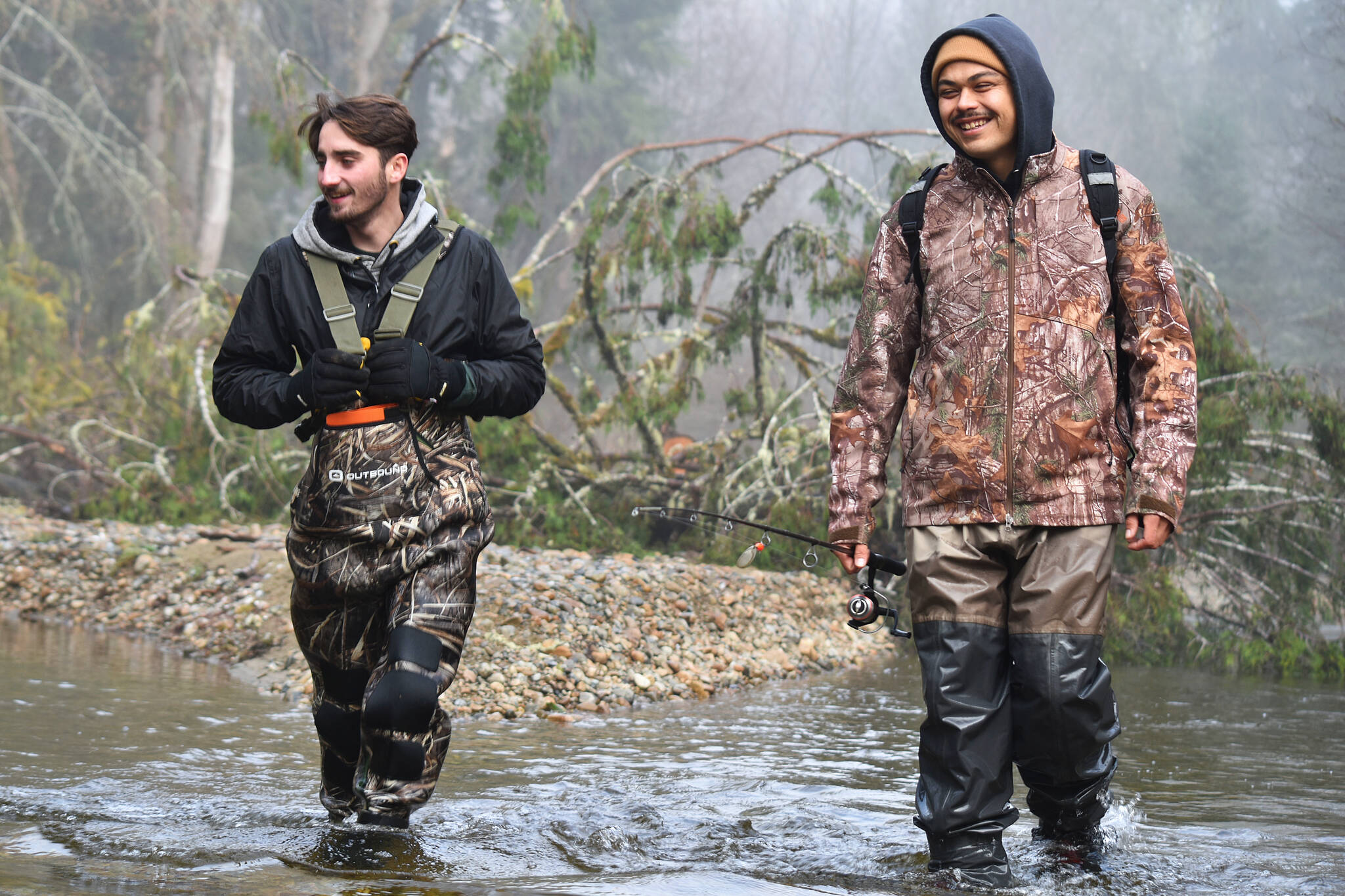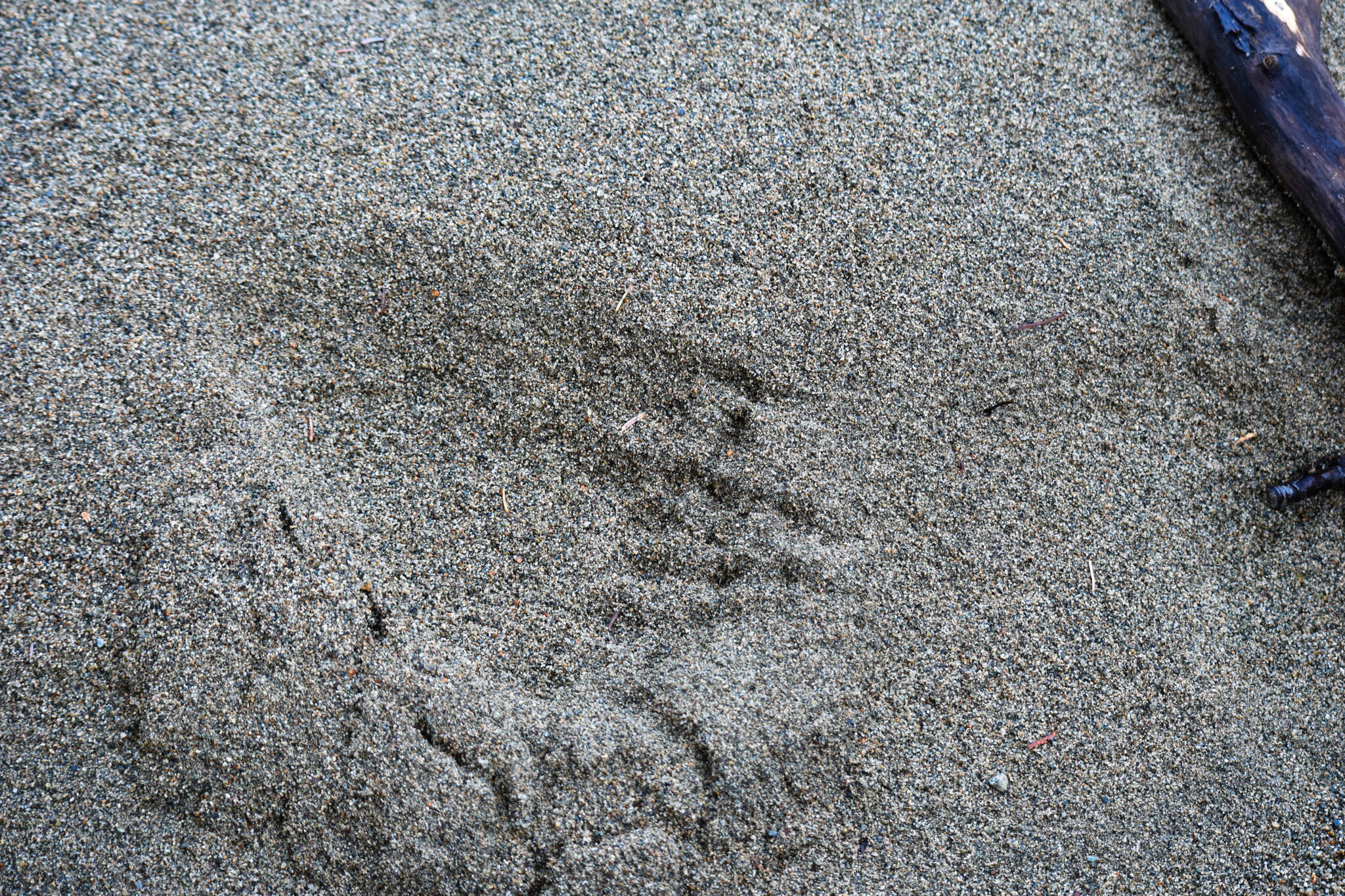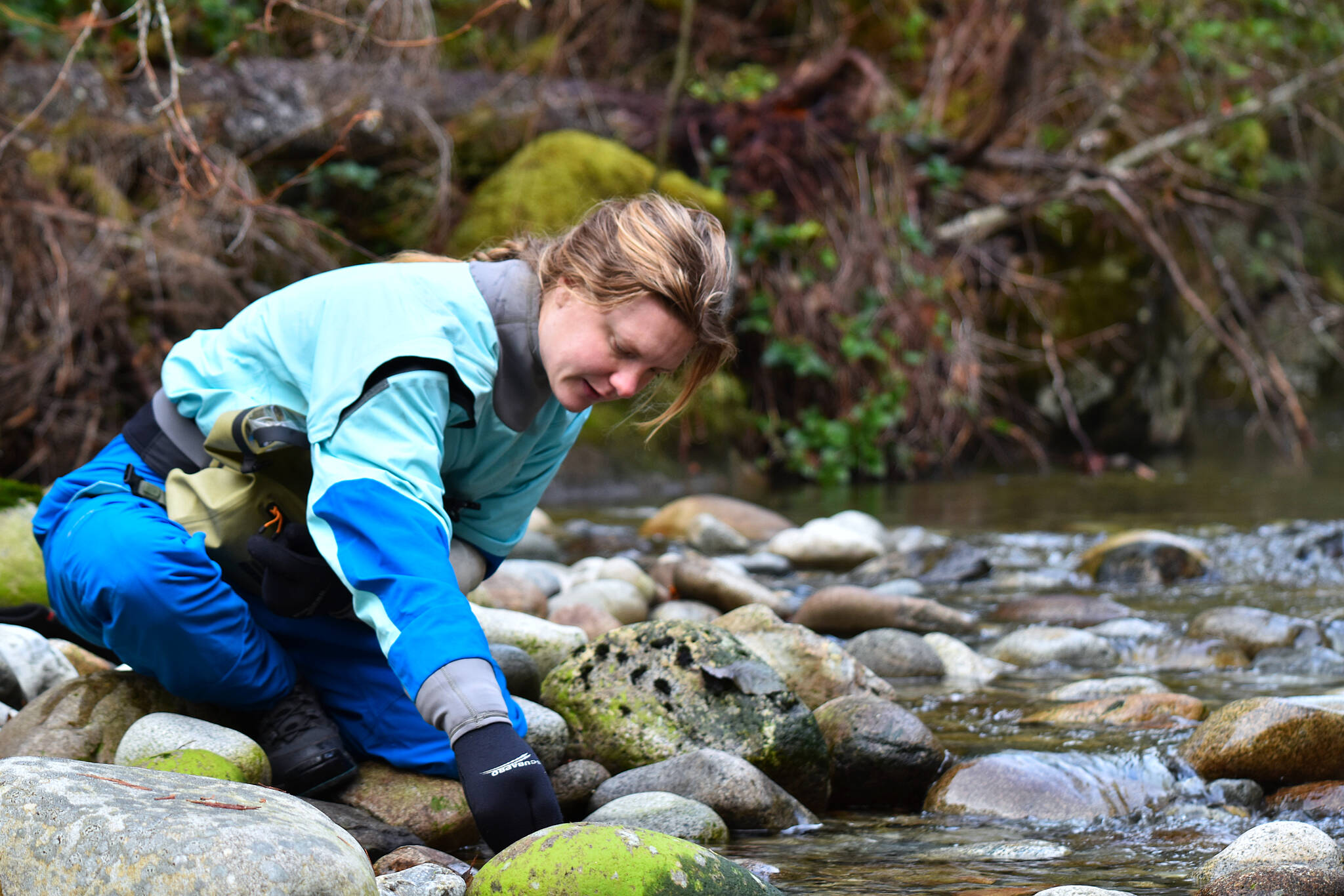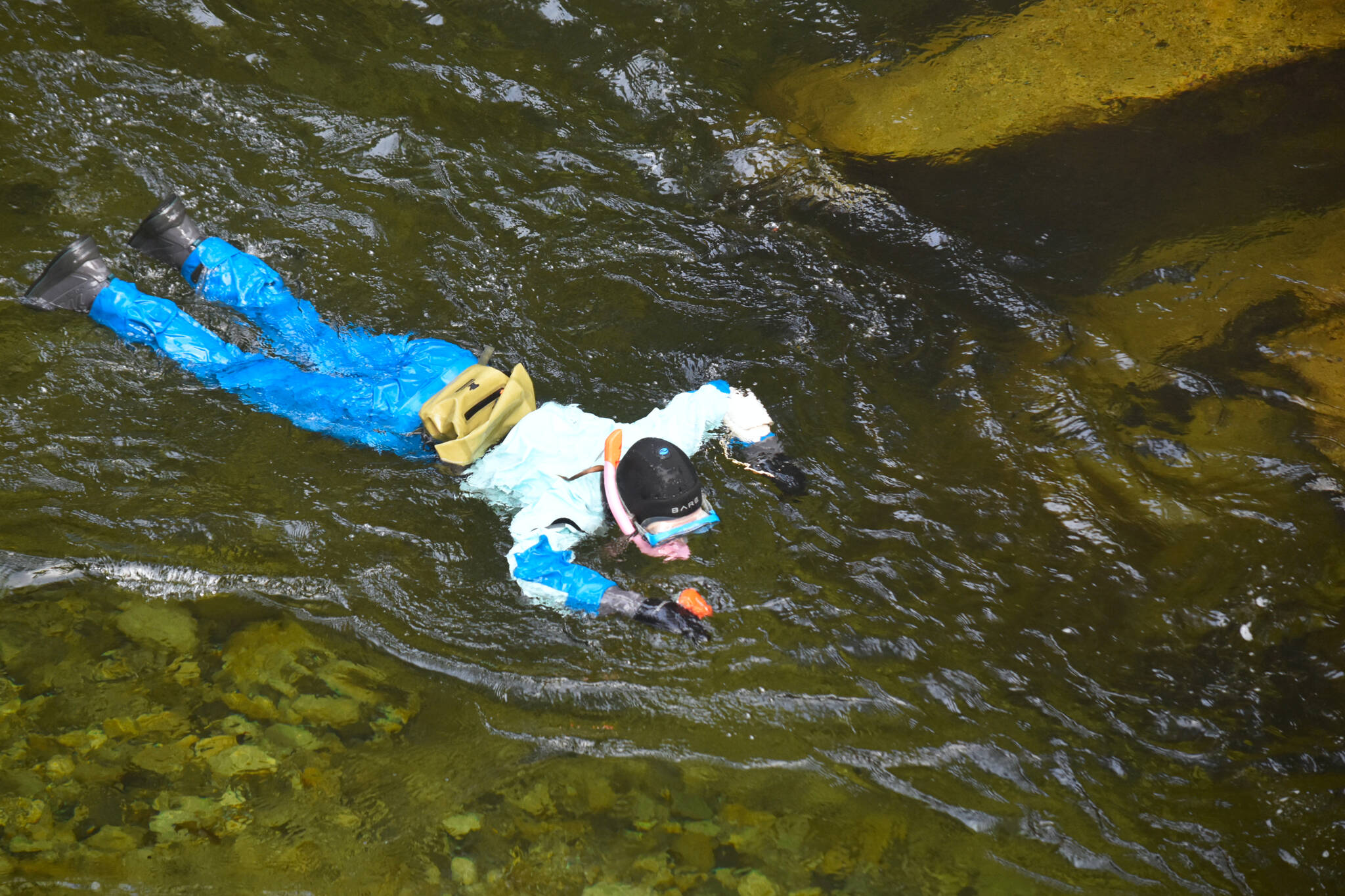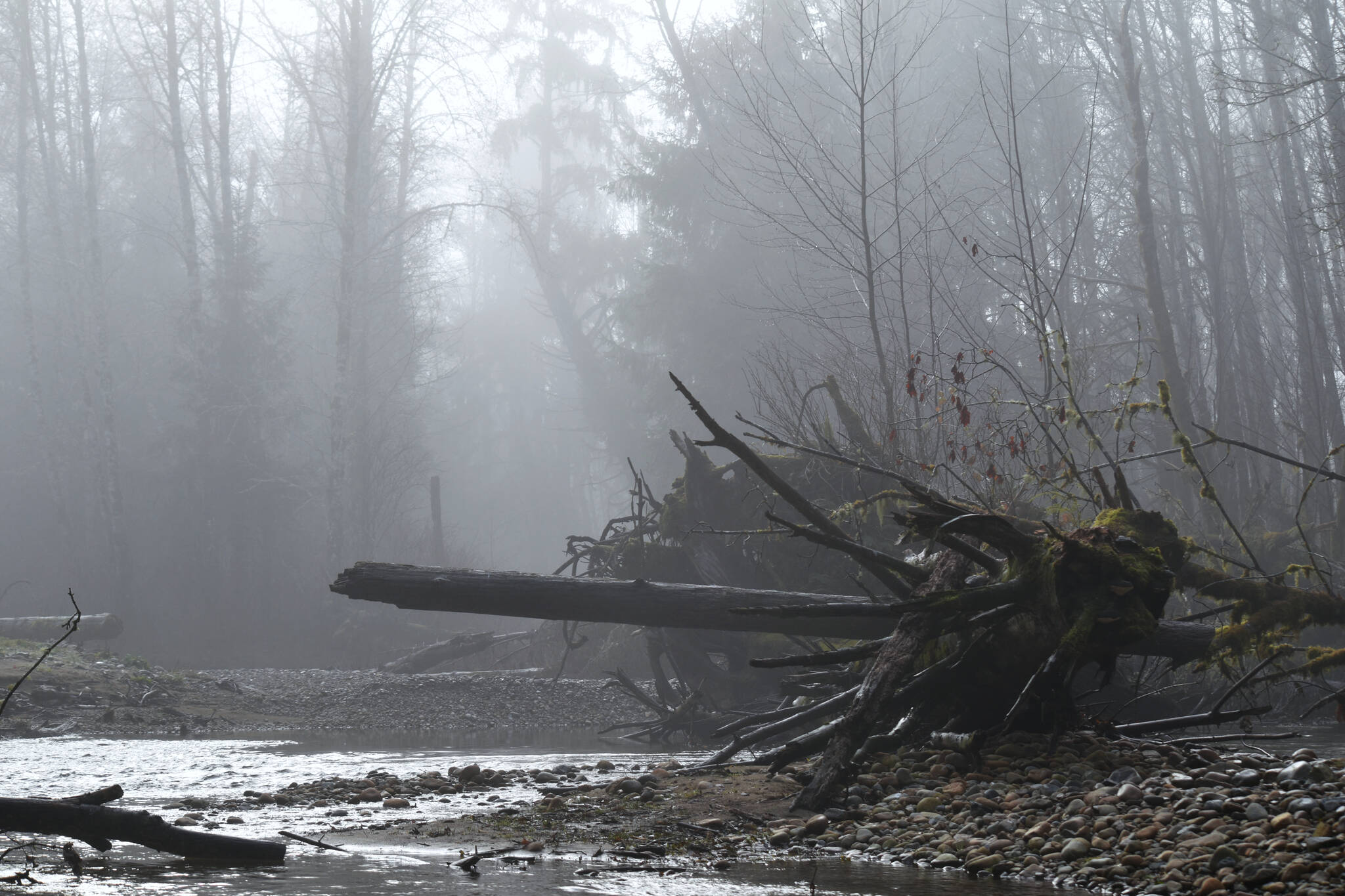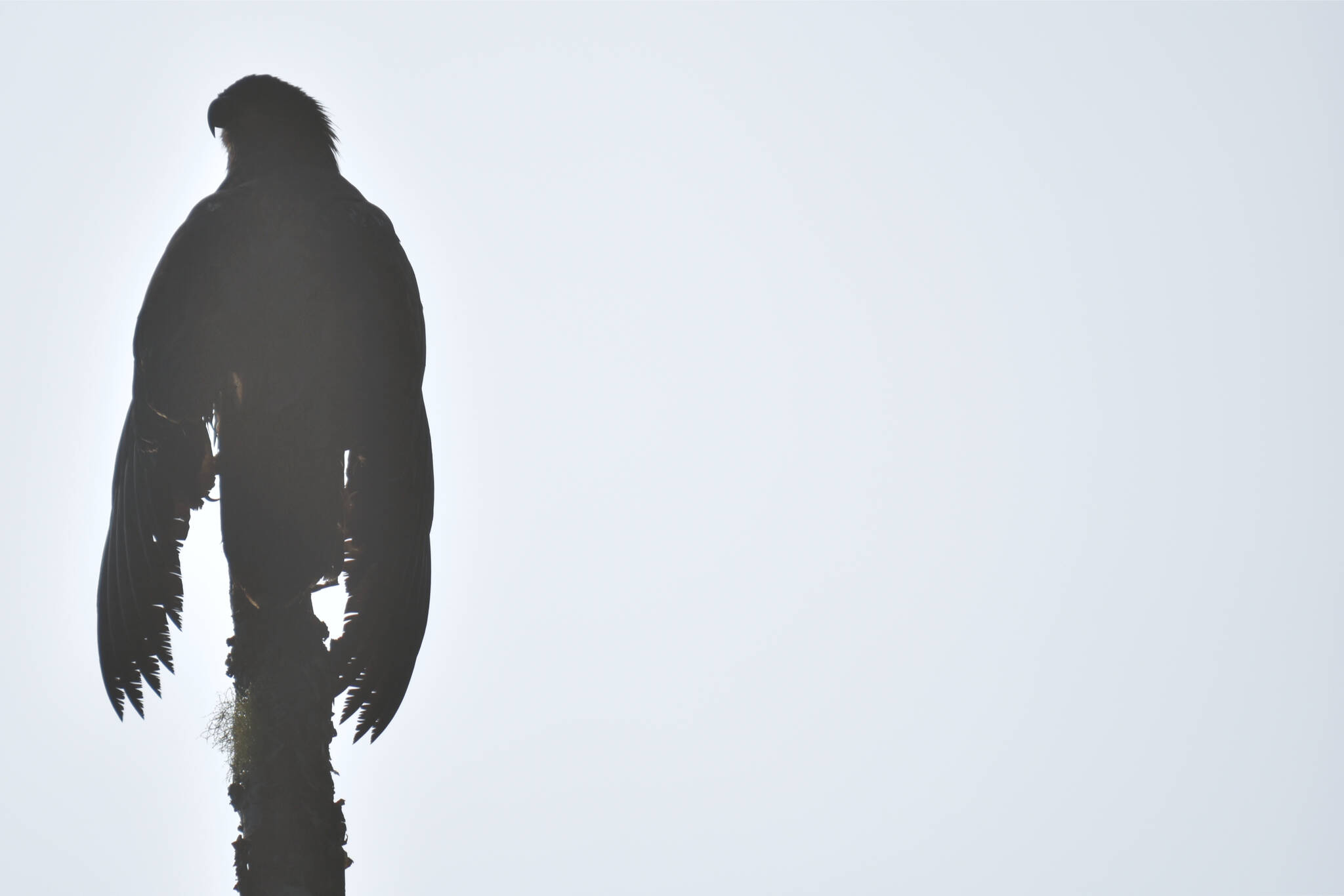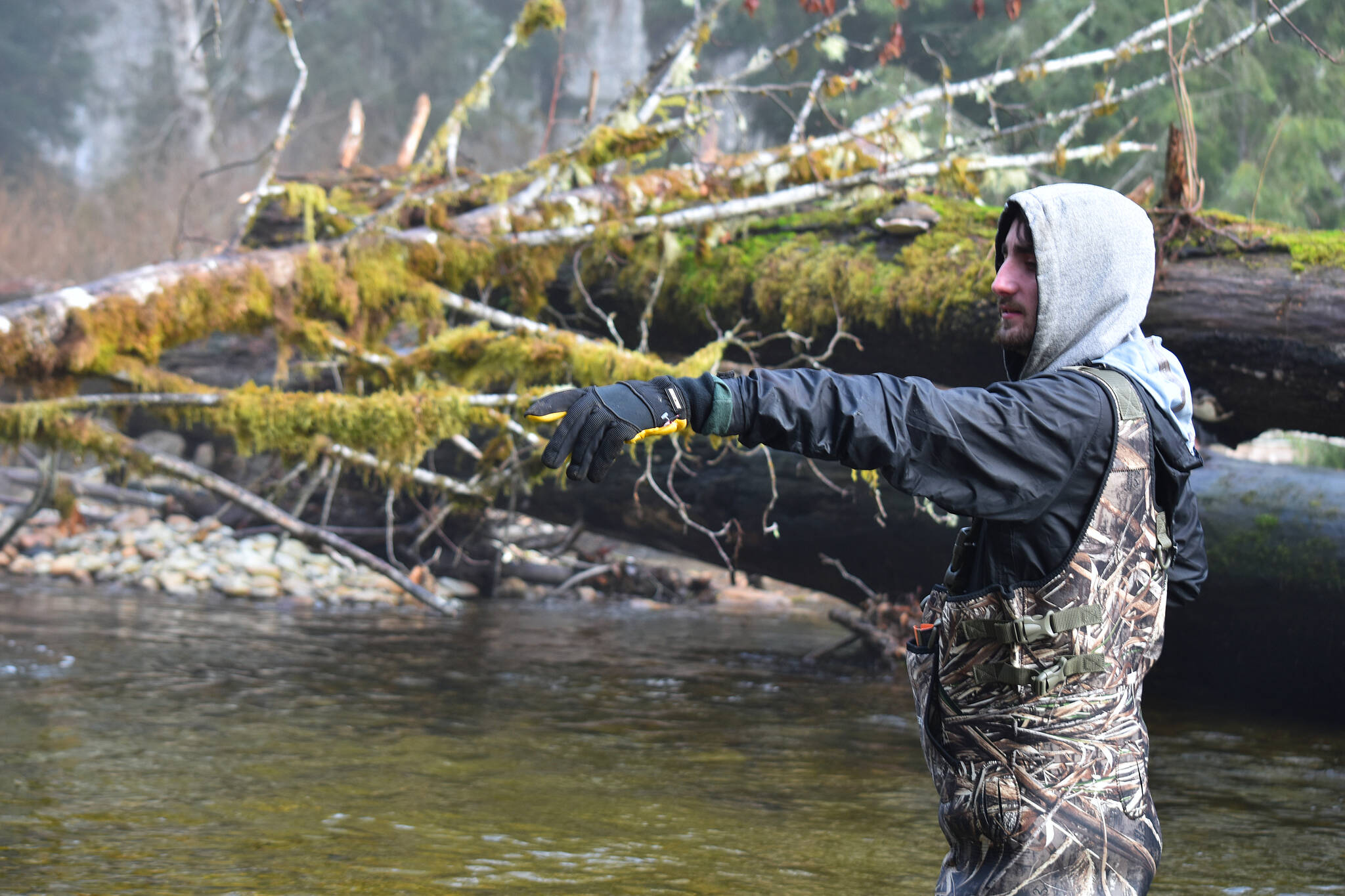On the cold and misty morning of Nov. 24, Mikala Wheeler woke up in the wee hours while most of the Valley was still asleep. She packed her lunch and stuffed her dry suit and snorkelling equipment into the back of her SUV.
At 6 a.m., she boarded the Powell River ferry en route to the Theodosia River for the last time this season. For almost every week since August, the woman led a crew of three other members to survey the salmon population of this remote watershed.
For Wheeler, a registered professional biological technician at Courtenay’s Current Environmental, these weekly assignments meant embarking on a 14-hour journey, travelling more than 160 kilometres on highway, water, and logging roads.
On her way to the survey site, she stopped at the Tla’amin Salmon Hatchery. There, she transferred all her gear into a boat to continue her long trek with three other members of the Nation – Simon George, Richard Hackett, and Johnson Adams.
After a 20-minute boat ride, the crew of four tied the boat to a frost-covered pier giving access to an active logging road.
Jumping in a truck that was already parked there, Wheeler, George, Hackett, and Adams, slowly made their way to the starting point of their survey on one of the many arms of the Theodosia River.
At 10 a.m. sharp, the team of four got out of the truck and eventually divided into two teams: one swimming and one walking.
Along with George, Wheeler put on her dry suit and jumped in the frigid water of the Theodosia.
As for Hackett and Adams, they started their 10-kilometre river walk a little further down the road.
“Essentially, (the snorkelling crew swims for) an approximately 2.5-kilometre stretch of the Theodosia River during which they basically enumerate and identify the species of salmon (present in the river),” explained Wheeler. “We also try to notice if there are any kind of things that are noteworthy.
“The walking crew is very much the same thing. They count the (salmon) while keeping an eye on things.”
That day, both teams cumulatively counted 600 salmon – most of which were cohos. This number is but a fraction of the 3,000 salmon the four counted at the peak of the season in August.
Contracted by the Department of Fisheries and Oceans Canada (DFO), Wheeler has to provide these weekly numbers to the ministry for two main reasons.
With this hard data, DFO issues a public weekly bulletin, informing the public about the state of salmon in the region and providing general notes to inform different stakeholders about commercial and recreational fisheries.
Wheeler further explained that this same data provides the information needed by DFO to conceive the regional salmon stock assessment for the upcoming year.
Despite it being her first year on this specific project, the technician observed a trend that alarmed experts who had previously surveyed the river.
“The first survey we did, we had two people from DFO, who have been long-term crew leads on this project, come out with us, and they were both flabbergasted at how low the flow (was),” said Wheeler. “I remember just standing and saying: ‘I’ve never ever seen the Theodosia this low.’”
Besides this one glaring detail, the crew lead mentioned that everything went ‘smoothly’ adding that “it was a pleasure to work with the Tla’amin Nation,” which provided the team lead with invaluable help.
“Logistically speaking, it is so difficult to mobilize this kind of survey on a weekly basis,” added Wheeler. (Fortunately for us), the Tla’amin Nation is already set up (to go out there) because of the Guardian program.
“They also have a ton of local knowledge, a really unique perspective, and know the area very well.”
In retrospect, despite the exhausting nature of these 14-hour-long shifts, the crew lead regarded herself as fortunate to have been part of such a unique work experience and looked forward to continuing it for years to come.
“I really enjoyed this type of work. It’s such a pleasure to be able to see such a faraway area and have kind of an intimate knowledge of this place that I have no business being otherwise,” said Wheeler.
“It was also a pleasure to work with the (Tla’amin) First Nation in general. I find them very grounding and they’re generally just a happy crew that really cares about their environment.”
RELATED: A vital linchpin: celebrating the life cycle of Vancouver Island salmon
NEWSLETTER: Sign up for local news updates to your email
Comox ValleyCourtenayFirst NationsPowell RiverSalmon

